One of the most common questions I get regarding nymphing is how to know if you’re fishing your nymphs in the strike zone? Since we can’t always see at what level fish are feeding below the surface, we have to work with is our knowledge and powers of observation to formulate an educated guess.
There’s a well-heeled saying which proclaims that you’re not nymphing correctly if you aren’t constantly snagging bottom. As a result, many anglers believe they need to bounce their nymphs along the stream bottom at all times. This is most certainly an overstatement.
That said, keeping your nymphs near the bottom of the stream throughout the drift, more often than not, is the best approach. Trout prefer to hold in the softest currents to feed. And, even in heavy riffles, soft cushions of water occur near the riverbed, allowing trout to comfortably hold next to the heavy currents above which deliver food and cover.
During the colder times of the year, trout are less likely to move higher up in the winter column to chase food. Trout are cold blooded so when water temperatures drop, their metabolisms slow and the they become less active. On these ‘average’ days (think early spring, fall and winter days or cold snaps at any time during the year), I prefer to work deeper as trout tend to hold closer to the bottom.
There are, however, periods throughout the year where trout will hold higher in the water column to feed. As as result, it is important to is evaluate the activity level of both fish and insects, in an effort to understand the current conditions of the creek, stream or river you’re fishing. Feeding habits of vary by season, day and even time of day. Additionally, every fishery is different. What works on one river at a certain time of year isn’t guaranteed to translate to another fishery, even if it’s right next door. You need to evaluate each and every situation.
One of the most likely times to find trout feeding higher in the water column is during hatch season, when both bug and trout activity are at peak levels. This is the time of year when intense hatches send trout chasing down emerging insects. In my neck of the woods in central PA, this often means April through early June. Out west, it may be during the month of July.
Remember that trout likely look up and not down for food. A mistake often made is fishing your rig too deep during peak hatch season, where trout are mobile and can often be suspended higher in the water column and looking up for food. The key to success is knowing when these peak trout activity levels occur and not fishing below feeding trout.
So how do you determine where the trout are feeding on a given day? As my good friend and great nymph fisherman, John Stoyanoff always says, “you cannot dictate to the trout at what level to feed.” Put another way: you need to let the trout tell you where they’re feeding. If you know where your nymphs are fishing in the water column, the fish will tell you the rest.
While I try not to focus too intently on percentages, noting how often your nymphing rig grabs bottom can be a good way of judging whether your nymphs are bouncing right along the riverbed or drifting higher in the water column.
Here’s a method you can try: identify a primary and a secondary target. Your primary target is where you expect a feeding fish to be, while your secondary target is where you’ll need to cast upstream to allow the rig ample time to reach the correct level before entering the primary target. The primary target may be a short pocket or a head or a run, but whatever your primary target is, this is where to take note of how often my nymphing rig grabs bottom, causing you to set the hook.
If you’re grabbing bottom roughly 20% of the time, chances are your nymph is most often fishing higher in the water column. If you’re snagging rocks 40% of the time or more, you’re likely fishing a traditional bottom-bouncing rig.
Nymphing rigs that are easily adjustable are an asset to your fishing. Every time you take a few steps or move to another fishing spot, speed and water depth are almost invariably changing, so you also need to change the amount of weight on the rig or the spacing between your indicator and your flies. It’s best to use indicators that easily adjust or weight that I can be taken on and off the leader with little hassle.
Don’t give up on an area until you’ve exhausted all possible depths presentations, from drifting below the surface to dredging the bottom. After a little experimenting with your rig, you’ll eventually “get the drift.”




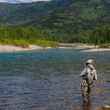


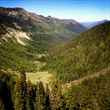


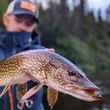




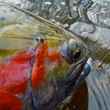



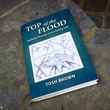
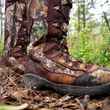



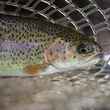
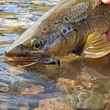





Comments
Larry Ydens replied on Permalink
On many dam release waters, deep channels will hold many fish, who often rise in the water column during a hatch. On the San Juan, I can "tune" my depth by casting To these channels and observing my takes. If the take happens early in the drift, the trout are taking the nymph early in the descent, and I have too much weight on. If the take doesn't occur until late in the drift, then the nymph isn't getting down to the zone fast enough, and I add more weight. I try to adjust the weight to keep the nymph in the strike zone longer. Changing spots usually means changing the indicator depth. But after a couple of hours (if you're lucky) , the zone has changed, and it's back to the beginning again !!
Pages